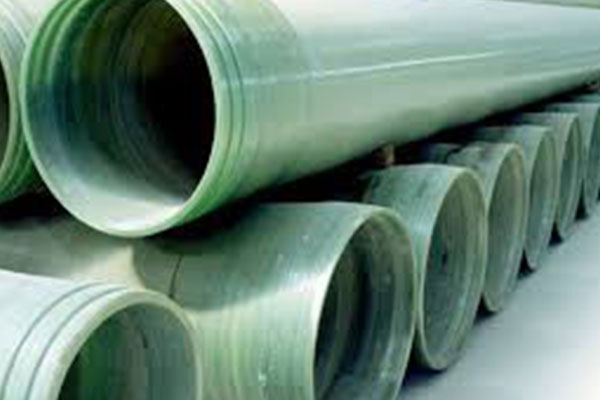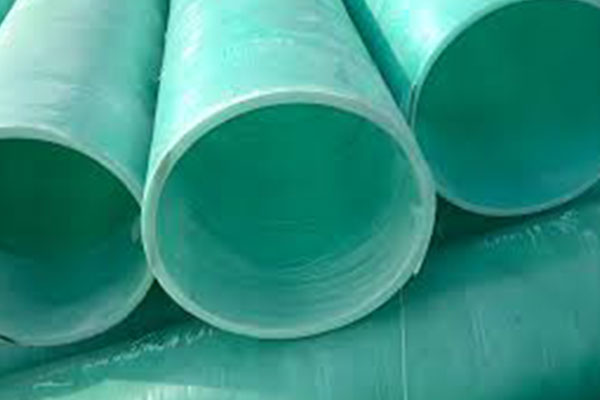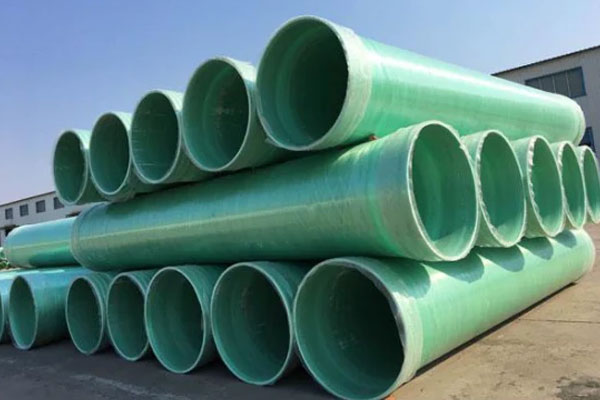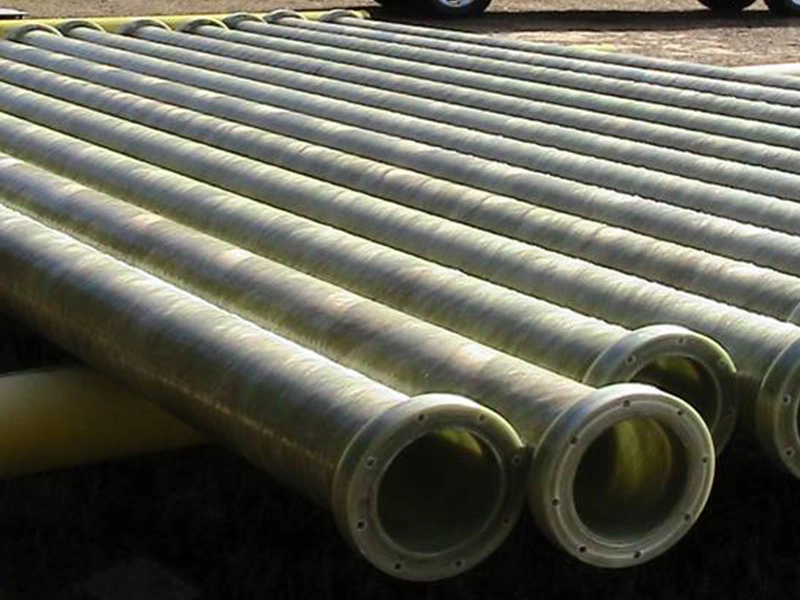Glass Fiber Reinforced Plastic (FRP) Sand Pipes, also referred to as GRP (Glass Reinforced Plastic) sand pipes, are specially engineered composite pipes designed to handle abrasive slurries and sand-laden fluids. These pipes combine the strength of fiberglass reinforcements with corrosion-resistant thermosetting resins, offering an exceptional solution for applications that demand high durability, chemical resistance, and mechanical performance in abrasive and harsh operating environments.
产品性能介绍
Due to their non-metallic composition and advanced composite structure, FRP sand pipes are widely used in sectors such as mining, dredging, oil & gas, desilting, construction dewatering, water treatment, and offshore sand transfer systems. Their unique composition offers superior advantages over traditional materials such as steel, HDPE, or concrete in terms of lifespan, corrosion resistance, and weight.
2. Applications
FRP sand pipes are extensively used in:
-
Sand and slurry transport in mining operations
-
Dredging of rivers, ports, and harbors
-
Desilting systems in reservoirs and canals
-
Hydraulic fill projects for land reclamation
-
Oilfield operations, including produced water with sand
-
Offshore and coastal engineering
-
Pneumatic or gravity-fed sand transportation in industrial processes
-
Effluent discharge pipelines containing suspended solids
3. Key Features and Advantages
| 特征 | Benefit |
|---|---|
| High Abrasion Resistance | Engineered internal liner to withstand abrasive materials such as sand, grit, silt, and gravel |
| Corrosion-Resistant | Inert to seawater, industrial effluents, acids, alkalis, and saline sand |
| 高强度重量比 | Lightweight yet structurally strong; easy to install, transport, and maintain |
| Smooth Inner Bore | Reduces friction loss and prevents sediment deposition, improving flow efficiency |
| Customizable Lining | Internal linings like epoxy, vinyl ester, or ceramic-filled for high-wear conditions |
| Thermal and UV Stability | Stable performance in outdoor and marine environments |
| Long Service Life | 25–50 years depending on application and resin system |
| Jointing Versatility | Available with bell-spigot joints, flanged ends, or mechanical couplings |
| Non-conductive and Non-toxic | Safe for various industrial uses and does not leach chemicals |
4. Construction and Layering
FRP sand pipes are composed of three core layers, each designed for a specific function:
-
Inner Liner (Barrier Layer):
-
Resin-rich layer with high abrasion and chemical resistance
-
Optional use of fillers like silica, ceramic, or rubber-enhanced compounds
-
Thickness: 1–3 mm depending on the application
-
-
Structural Layer:
-
Wound with E-glass or ECR-glass roving and chopped strand mat (CSM)
-
Provides hoop strength and axial load capacity
-
Made via filament winding or hand lay-up
-
-
External Layer (Protective Coating):
-
UV-resistant gel coat or resin matrix
-
Protects from environmental degradation
-
5. Technical Data Sheet (TDS)
General Specifications
| 范围 | 规格 |
|---|---|
| 产品名称 | FRP/GRP Sand Transport Pipe |
| Nominal Diameter | DN 100 mm to DN 3000 mm |
| Standard Length | 3m, 6m, 9m, 12m (custom lengths available) |
| Pipe Class | Customizable from PN6 to PN25 |
| Liner Material | Epoxy, Vinyl Ester, or Polyester Resin |
| Reinforcement Material | E-glass / ECR-glass |
| Outer Finish | UV Stabilized Gelcoat / Topcoat |
| Design Life | 25–50 years |
机械性能
| 财产 | 价值观 | 标准 |
|---|---|---|
| 抗拉强度 | ≥ 180 MPa | ASTM D638 |
| 抗弯强度 | ≥ 250 MPa | ASTM D790 |
| Hoop Tensile Strength | ≥ 200 MPa | ASTM D2290 |
| Axial Tensile Strength | ≥ 100 MPa | ASTM D2105 |
| 抗冲击性 | > 1000 J/m | ASTM D256 |
| 巴氏硬度 | 45–55 | ASTM D2583 |
| Specific Gravity | 1.6–1.9 | ASTM D792 |
| Thermal Conductivity | ~0.2 W/mK | ASTM C177 |
| Water Absorption | < 0.2% | ASTM D570 |
Hydraulic Performance
| 范围 | 价值观 |
|---|---|
| Hazen-Williams C-Factor | ≥ 150 |
| Roughness Coefficient (Manning’s n) | 0.009–0.011 |
| Internal Surface Finish | < 0.5 μm (very smooth) |
| Velocity (max) | Up to 5–6 m/s depending on diameter and liner |
Temperature and Chemical Resistance
| 范围 | 价值观 |
|---|---|
| Working Temperature | -40°C to +70°C (up to 110°C for special resins) |
| 抗紫外线 | Excellent (with gel coat) |
| 耐化学性 | Excellent to sand, saltwater, acids (pH 3–10) |
| 防火性能 | Available upon request with fire-retardant resin systems |
6. Standard Sizes and Classes
| Nominal Diameter (mm) | Wall Thickness (mm) | Pressure Rating (PN) | Approx. Weight (kg/m) |
|---|---|---|---|
| 150 | 6–10 | PN6 – PN16 | 6–10 |
| 200 | 7–12 | PN6 – PN16 | 9–14 |
| 250 | 8–14 | PN6 – PN16 | 12–20 |
| 300 | 10–18 | PN6 – PN25 | 18–30 |
| 400 | 12–20 | PN6 – PN25 | 25–42 |
| 600 | 15–30 | PN6 – PN25 | 40–70 |
| 800 | 20–35 | PN6 – PN25 | 65–100 |
| 1000 | 25–45 | PN6 – PN25 | 90–140 |
Higher diameters and pressure classes are available upon request.
7. Jointing Methods
| 类型 | 描述 |
|---|---|
| Bell-Spigot with Rubber Ring | Quick installation, flexible, leak-proof; ideal for buried pipelines |
| Flanged Ends | For above-ground or modular assembly, easy maintenance |
| Mechanical Couplings | Bolt-on joints with gaskets; ideal for field adjustments |
| Butt & Wrap (Laminate Joint) | Used for high-pressure or customized fitting angles |
| Threaded Ends (small diameter) | Available on request for DN < 100 mm |
8. Accessories and Fittings
-
Elbows (15°, 30°, 45°, 90°)
-
T-joints, Y-joints
-
Reducers and expanders
-
End caps
-
Sand trap valves
-
Inspection ports with covers
-
Anchor blocks and supports
All fittings are fabricated using the same resin-reinforced structure and are pressure-rated.
9. Installation Guidelines
-
Trench Bedding: Uniform bedding with compacted sand or soil to avoid point loading.
-
Pipe Handling: Use nylon slings; avoid direct contact with steel cables.
-
Joint Assembly: Ensure clean and lubricated seals; align pipes accurately before pushing.
-
Backfilling: Use fine material free of sharp stones; compact evenly around the pipe.
-
Above-ground Installations: Use clamps, supports every 1.5–2m (depending on diameter).
-
Testing: Hydrostatic pressure tests should be conducted before commissioning.
10. Quality Standards and Certifications
FRP sand pipes are manufactured and tested as per the following standards:
-
ASTM D2996 / D3517 / D3262 / D2310
-
AWWA C950 – For fiberglass pressure pipes
-
ISO 10467 / 10639 – For drainage and pressure pipes
-
EN 1796 / EN 14364 – Buried pipelines for water and sewer
-
API RP 15LR – Fiberglass line pipe for oilfield services
-
BIS 12709 – For FRP/GRP piping systems in India
11. Environmental and Economic Benefits
-
Energy Efficient: Lower friction = less pumping energy
-
Low Carbon Footprint: Lightweight, low emissions during transport and installation
-
Recyclable: Some resin systems and fiberglass can be reused or repurposed
-
低维护: No internal corrosion or chemical cleaning required
-
Long-Term Value: Cost-effective over 30–50 year lifecycle
12. Customization Options
-
Colored Outer Shells (yellow, green, gray, red)
-
Anti-static or conductive coatings for explosive zones
-
Fire-retardant resin systems
-
High-impact or extra-thick liners for aggressive abrasion zones
-
Flexible or collapsible sections for temporary sites
-
Pre-insulated versions for cold weather applications
13. Common FAQs
Q1: Can FRP sand pipes be used for underwater dredging discharge?
A: Yes, they are ideal for underwater dredging pipelines when paired with floaters or anchors.
Q2: How do FRP pipes handle sand abrasion compared to steel or HDPE?
A: FRP pipes with abrasion liners outperform HDPE in long-term wear and are corrosion-free, unlike steel, which rusts and pits over time.
Q3: Are the joints leak-proof under pressure?
A: Yes. Rubber-ring bell-spigot joints and laminated joints are fully pressure-rated and leak-proof when correctly installed.
Q4: What is the maximum flow velocity for sand slurry?
A: Generally 4–6 m/s, depending on liner material and pipe diameter. Customized designs may accommodate higher flow.
Q5: Can I install FRP pipes in extremely hot or cold environments?
A: Yes. With special resins and insulation, FRP pipes can withstand extreme environments from -40°C to +110°C.
14. Summary
FRP sand pipes represent the pinnacle of modern piping technology in abrasive and corrosive environments. Their composite construction offers exceptional strength, abrasion resistance, and flexibility. Whether transporting mining slurry, dredged silt, or industrial sand-water mixes, FRP pipes provide reliable, long-term performance with reduced life-cycle costs.
With multiple liner options, joint configurations, pressure ratings, and global certification compliance, FRP sand pipes are the preferred choice for engineers and contractors seeking reliable, low-maintenance piping solutions.
Glass fiber reinforced plastic sand pipe
系列 :
玻璃钢管道 >应用场景
Sand and slurry transport in mining operations Dredging of rivers, ports, and harbors Desilting systems in reservoirs and canals Hydraulic fill projects for land reclamation Oilfield operations, including produced water with sand Offshore and coastal engineering Pneumatic or gravity-fed sand transportation in industrial processes Effluent discharge pipelines containing suspended solids
常问问题
问:
Are FRP sand pipes resistant to abrasion?
答 :
Yes. FRP sand pipes are designed with abrasion-resistant internal liners, sometimes filled with ceramic or silica materials, to withstand the wear and tear caused by continuous sand or slurry flow.
问:
How long do FRP sand pipes last?
答 :
With proper design and installation, FRP sand pipes can last 25 to 50 years depending on flow conditions, resin type, and abrasion levels.
问:
What are the pressure ratings of FRP sand pipes?
答 :
They are available in various pressure classes from PN6 to PN25 (and higher upon request), suitable for low to medium pressure sand transport systems.
问:
What is the temperature tolerance of FRP sand pipes?
答 :
Standard FRP pipes can operate from -40°C to +70°C, and up to +110°C with special resin systems like vinyl ester or epoxy.
问:
Can FRP sand pipes handle aggressive chemicals?
答 :
Yes. FRP pipes are chemically resistant to acids, alkalis, salts, and organic chemicals commonly present in sand-laden industrial or wastewater.
问:
Are FRP pipes affected by UV radiation?
答 :
No. The outer surface is protected with UV-resistant gel coats or resins, allowing outdoor and offshore exposure without degradation.
其他相关产品







